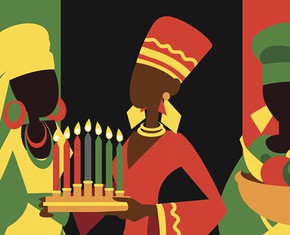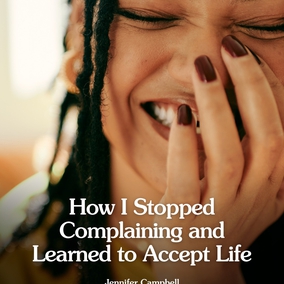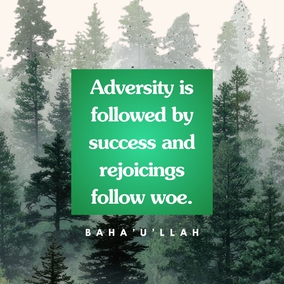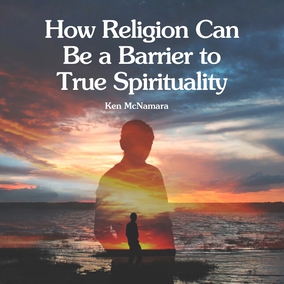The views expressed in our content reflect individual perspectives and do not represent the authoritative views of the Baha'i Faith.
So far in this series of essays we’ve seen that the Hebrew Bible presents a threefold picture of human nature: the body or ‘flesh;’ the psyche or self represented by ‘breath;’ and the indwelling divine spirit imparted from God, and returning to Him.
Although nefeš is the word most commonly translated as ‘soul’ in the Bible, the genuinely spiritual component that “delivers man from the material world” is the God-breathed spirit. The nefeš must assimilate itself to the indwelling spirit, the true image of God—as in 2 Corinthians 3:18:
But we all, with open face beholding as in a glass the glory of the Lord, are changed into the same image from glory to glory, even as by the Spirit of the Lord.
Based on his analysis of the Baha’i writings, the French scholar Marc Lepain presents quite a similar picture:
It is important to define the link which exists between ruh and nafs, which we will henceforth characterize respectively as the soul and the psyche… The psyche (i.e. nafs) is thus a transitory phenomenon which is born of the interaction of the soul and the body. As soon as the tie between the soul and the body is broken, the illusion of the psyche disappears. The veil of the ‘vain imaginations’ is torn, and the subjectivity of the ego vanishes. Therefore, the purpose of the soul in this life is to bring about the purification of the psyche from the domination of illusion and temporality. – Marc Lepain, The Archaeology of the Kingdom of God, Peter Terry translation, pp. 141-142.
We have also seen passages in the Hebrew scriptures showing the possibility of avoiding Sheol or the ‘netherworld’ and going to be with God upon death (e.g. Psalm 73:22-28). Thus the return of the human spirit to the divine Spirit does not entail its obliteration.
Nevertheless, many ancient Israelites continued to adhere to the old Near Eastern view that death severed one’s connection to the Divine, and relegated one to a shadowy half-life. On his sickbed the Israelite king Hezekiah lamented:
For Sheol cannot praise thee, death cannot celebrate thee: they that go down into the pit cannot hope for thy truth. – Isaiah 38:18.
The 88th Psalm expresses this same doubt in the form of questions addressed to God:
Wilt thou show wonders to the dead? Shall the shades (‘rephaim’) arise and praise thee?
Shall thy lovingkindness be declared in the grave? Or thy faithfulness in Destruction?
Shall thy wonders be known in the dark? And thy righteousness in the land of forgetfulness?—Psalm 88:10-12 (verses 11-13, Jewish text).
In the full context of the Hebrew scriptures, the answer to these questions is affirmative. God’s power extends to Sheol (1 Samuel 2:6; Hosea 13:14), and certain passages of the Bible speak of a resurrection of the dead (Isaiah 26:19; Ezekiel 37:1-14)—corresponding to the Baha’i teaching that even the darkest souls can be enlightened and brought near to God through His grace. The souls of the saints and lovers of God can’t be truly described as ‘dead’ and thus the descriptions of ‘rephaim’ in Sheol need not apply to them: “God is not the God of the dead, but of the living.” – Mathew 22:32; 17:3; Qur’an 2:154; 4:157-158.
Nevertheless, in some Biblical passages, such as those quoted above, the awareness of this doesn’t come through clearly. These passages tell only half the story—the darkness and futility that awaits man’s naked ego in “the land of forgetfulness.” As Lewis Bayles Paton pointed out, this omission becomes understandable when we remember that the prophets were fighting to establish monotheism in a time and cultural setting where the dead were often deified.
In this context, the ancient Near Eastern notion of the dead as mere ‘shades’ in a netherworld was not the problem. Such emaciated specters posed no challenge to the sole sovereignty of God. But the popular idea that some of these dead ‘shades’—particularly great kings and heroes—became deities and could exert actual power from the underworld, was categorically rejected by the prophets. If the unique human spirit is a facet of God’s infinite spirit that returns to God upon death, then it is folly to worship any deceased human as a power separate from God.
The stage was then set for the wondrous insight of the 73rd Psalm, that blessedness, whether in this life or hereafter, is not obtained in separation from God, but through union with God—“the nearness of God (qirḇaṯ Elōhîm) is my good” (73:28). Though his flesh (body) and heart (intellect) be consumed, the psalmist was confident that God would receive him to Himself in glory.
We do not find these views emerging all at once in the Hebrew Bible. The Baha’i writings teach that God gradually unfolds His truth, in pace with humanity’s capacity to receive it, and that the great religions represent stages in this progressive revelation. As the record of an entire people’s encounter with the Divine across many centuries, the Hebrew Bible or Tanakh is itself a microcosm of this gradually unfolding process:
The path of the just is as the shining light, that shineth more and more unto the perfect day.—Proverbs 4:18.
One passage in the Tanakh—the Book of Daniel 12:2—mentions the doctrine of an end-time ‘general resurrection’ of the dead. The Israelites may have first encountered this belief among the Persian followers of the Prophet Zoroaster. It later became an accepted doctrine in Judaism, and very prominent in Christianity and Islam. Baha’is understand it, along with the entire complex of end-times signs (the falling of the stars, the destruction of the world by fire, followed by ‘New Heaven’ and ‘New Earth’), not as a literal description of events, but instead as symbolic of humanity’s spiritual upheaval and renewal at the dawn of a new Divine revelation. At such a time, people on Earth have the same opportunity to behold the Face of God that is possible for all in the heavenly Kingdom.
In these essays we’ve found that the Hebrew Bible, like the Baha’i writings, positively affirms the soul’s precious capacity to connect to God—a capacity that does not depend upon time or place, or one’s bodily life or death. The only thing that can eclipse this connection is the empty balloon of man’s own ego. In taming this ego—the desires of the nafs or nefeš—and drawing near to God, we can share the confidence of the Psalms and the Hidden Words:
And as for me, Thou upholdest me in mine integrity, and settest me before Thy face for ever.—Psalm 41:12 (verse 13, Jewish text).
O Son of Man! Wert thou to speed through the immensity of space and traverse the expanse of heaven, yet thou wouldst find no rest save in submission to Our command and humbleness before Our Face. – Baha’u’llah, The Hidden Words, p. 13.
















Comments
Sign in or create an account
Continue with Googleor